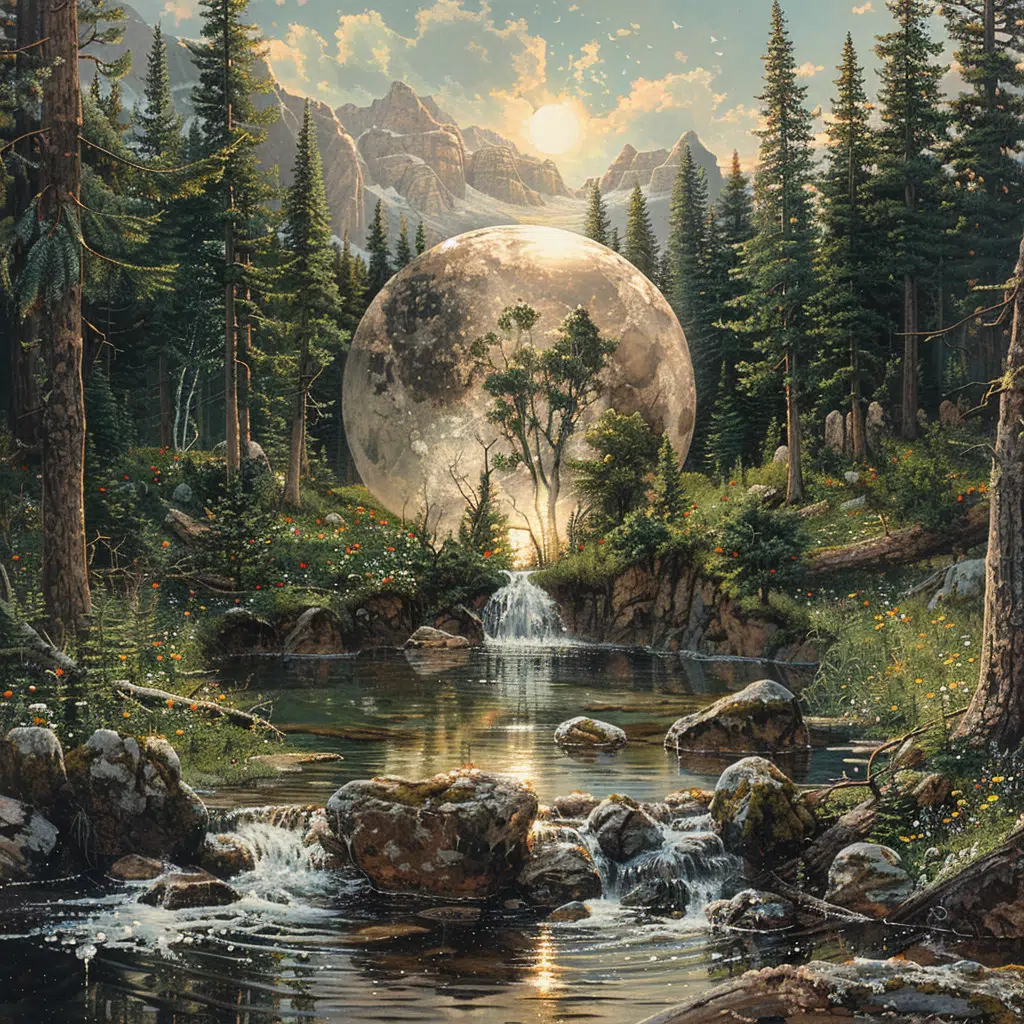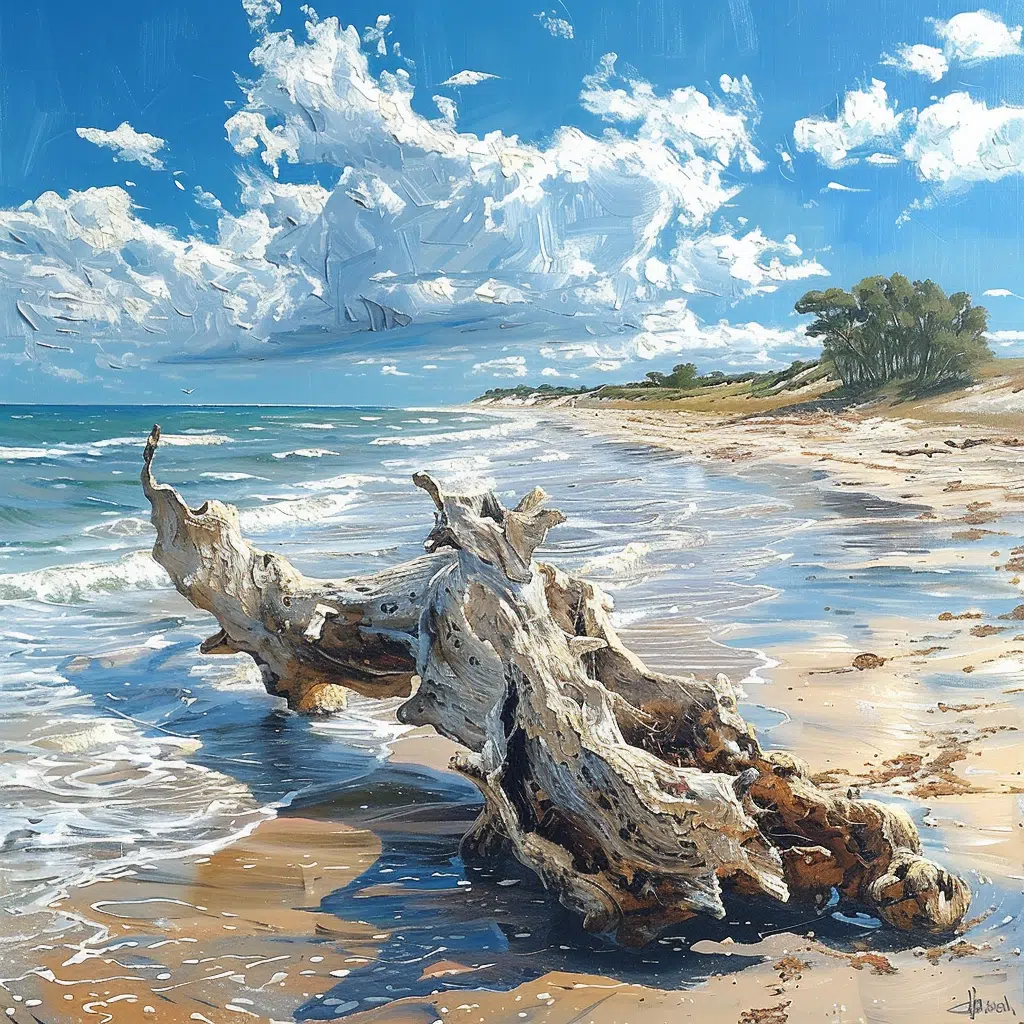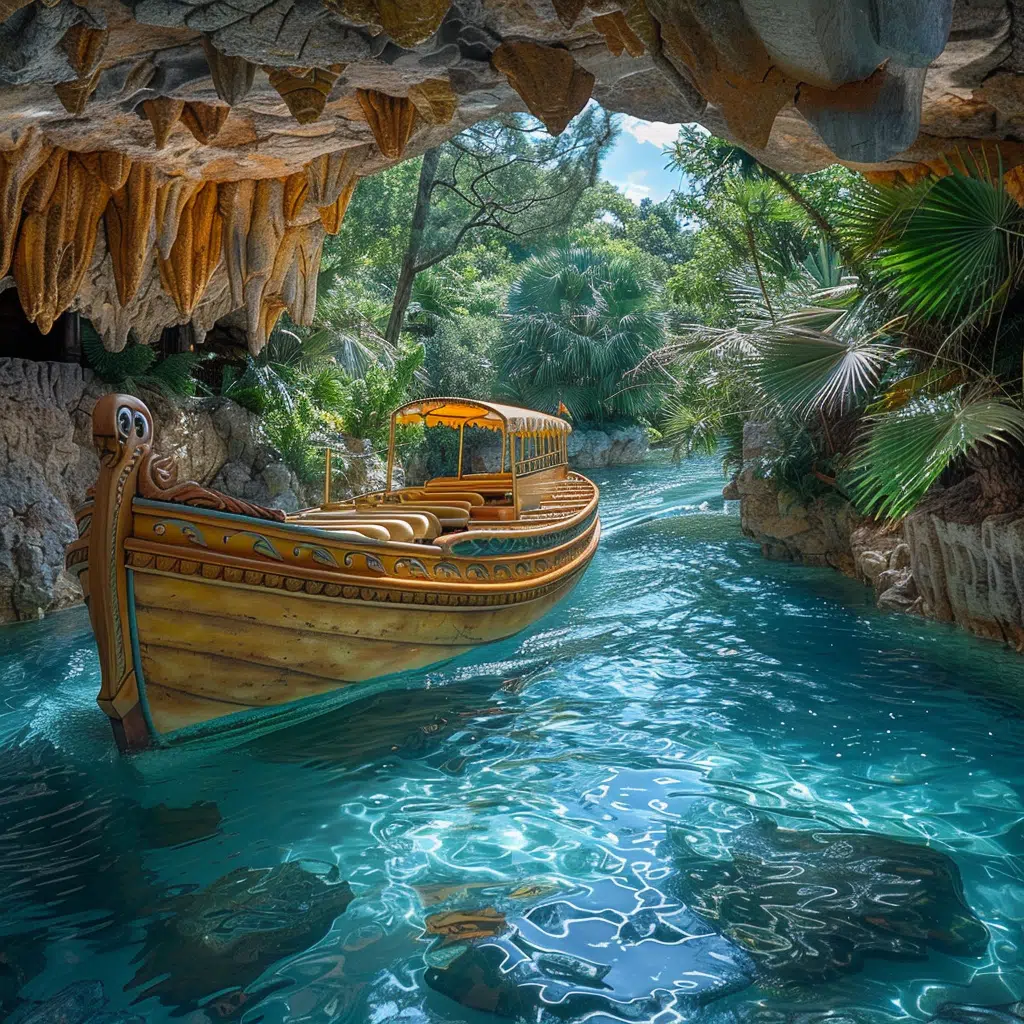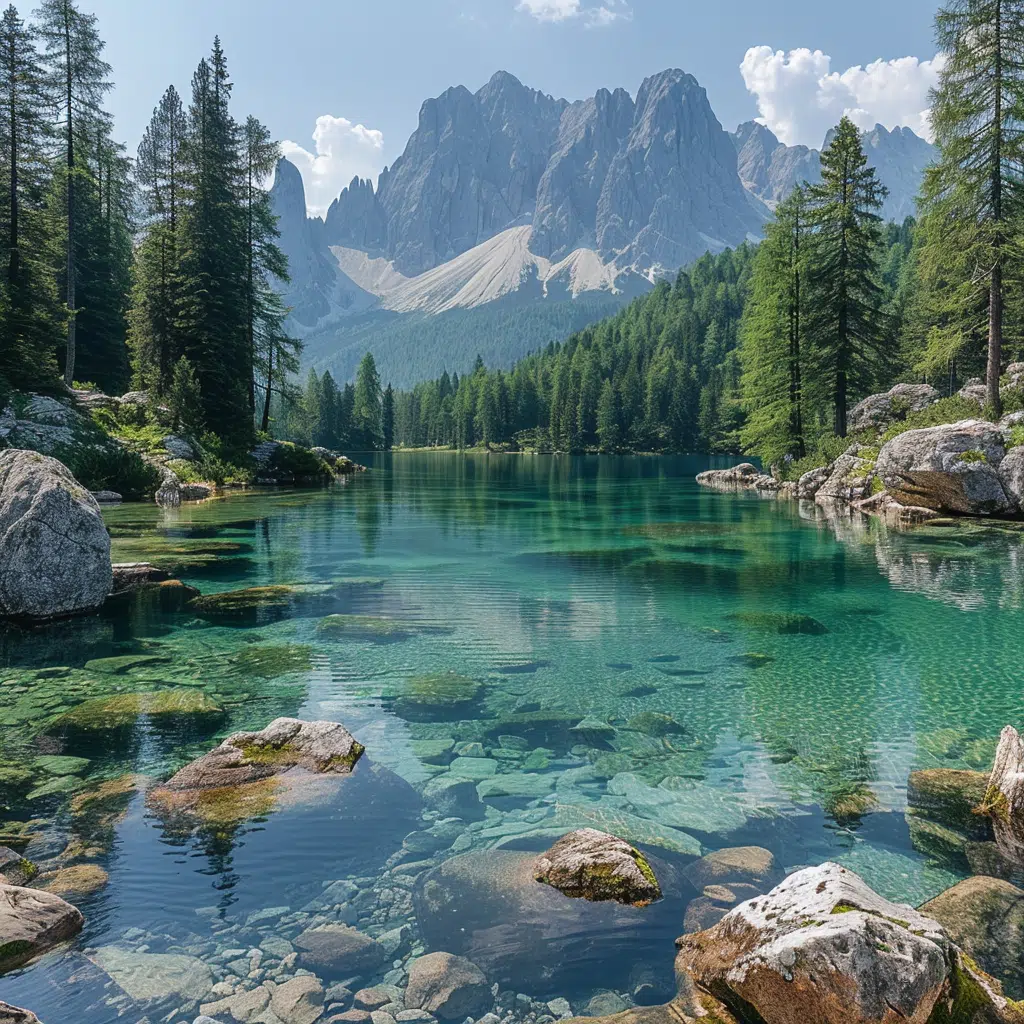Unveiling the Wonders of the Cave of the Crystals
Nestled in the arid landscape of Chihuahua, Mexico, lies a treasure trove that is at once awe-inspiring and otherworldly: the Cave of the Crystals. Imagine descending into the belly of the earth, only to find yourself in a colossal cathedral of natural crystal pillars. Here, scorching heat and suffocating humidity rule the realm – it’s as if Mother Nature has thrown down the gauntlet, daring us to witness her beauty amidst harsh extremes. This pristine marvel tucked deep beneath Naica Mine’s rugged terrain is the stage for one of the planet’s most magnificent geological ballets, as it plays host to some of the largest natural crystals ever discovered.
The Phenomenal Formation of the Cave of the Crystals
You could say the Cave of the Crystals was millennia in the making – a slow and steady masterpiece that has had geologists and luxury explorers alike chomping at the bit to understand its secrets. The making of this underground castle was no accident; it’s the child of precise conditions: an underground magma chamber, providing relentless heat, and mineral-rich waters, brimming with elements eager to crystallize. Selenite, the star of the show, grew unchecked into the titans we gape at today – some as long as a bus and as heavy as a pair of elephants dancing on a telephone wire.
Let’s cut to the chase: it’s the magma’s heat that’s been the oven baking these beauties, fostering an environment hotter than a cup Of Noodles on a summer day in Death Valley. You might be picturing a spa, what with the mineral waters and heat, but trust me, it’s far from what any high-end getaway would offer.
The Atlas of Crystal Giants: Selenite’s Pinnacle in Naica
Ever wondered what giants would look like if they were made of crystal? Look no further than the Cave of the Crystals. These glistening goliaths make the chandeliers of the grandest cathedrals look like child’s play. Let’s not just say they’re large – let’s give you the scope. Some of these selenite skyscrapers stretch over 12 meters long and more than a meter wide. That’s about the length of a city bus laid end to end, and thicker than your average armchair.
These crystal behemoths stomp all over the last record-holders from around the world, making them simply pale in comparison. Standing next to these crystal colossuses, you can’t help but feel like you’ve wandered into a scene from a sci-fi flick – it’s that surreal.
Environmental Extremes: The Challenges of Exploration
Ah, the thrill of discovery! But, fair warning, exploring the Cave of the Crystals isn’t for the faint of heart. The cave’s conditions could put an end to your adventuring days faster than you can say “where’s my water bottle?” We’re talking a scalding 136 degrees Fahrenheit with a side of near 100% humidity – think Florida summer on steroids and without the beach.
The folks who dive into this crystal palace don’t go in blind; they suit up like astronauts! Between the cooling gear and a limit on how long you can stay, it’s a race against the clock. It’s a marvel that people can explore it at all, given that the cave slams down the hammer with an environment that says, “take a quick peek, but don’t you dare overstay your welcome.”
The Fragile Future of the Cave of the Crystals
Here’s where the plot thickens: the Cave of the Crystals has been playing a game of hide and seek with the world. Once drained for our viewing pleasure, the cave got flooded again when the mining company hit an underwater river. Why would they do that? Turns out, without the balmy waters of the underground spring, the crystals would be as lost as socks in a laundry room.
With the cave now back under water, there’s an ongoing clash between wanting to ogle the crystals and needing to keep them safe. Efforts are being made to shield this vulnerable natural marvel from human meddling and natural wear and tear. It’s a tango between allowing jaw-dropping exploration while still keeping the giant’s slumber undisturbed.
Beyond the Naked Eye: Innovative Research in Crystal Caverns
But don’t you think for a second that the story ends there. The Cave of the Crystals is like a geological mystery novel that scientists are itching to read cover to cover. They’ve got their hands on tech that Sherlock Holmes would envy – non-invasive imaging that lets them peer into the cave without setting foot in it, and advanced dating techniques that are like carbon-copied calendars of the cave’s past.
This isn’t about chipping away at the scenery; it’s about tiptoeing through the crystal gallery and gathering secrets without disturbing the art. It’s the science of soft footsteps and sharp minds, cracking open the history books of the Earth without moving a single crystal.
The Cultural and Historical Impact of Naica’s Underground Treasure
Over the hill and through the magma to Naica’s crystals we go! Is it just a bunch of shiny rocks? Heck no. These crystals are more than just a scientific wonder; they’re a cultural symphony, plucking the strings of local lore and global fascination alike. It’s like having the Grand Canyon underground – a natural marvel that schools, museums, and your travel-hungry neighbors can’t stop buzzing about.
They’ve sparked everything from documentaries to coffee table books. It’s about recognizing and revering the marvels that lie beneath our feet and understanding just how astonishing our planet can be when it rolls up its sleeves.
Eco-tourism and its Role in Cave Conservation
So, can we turn the Cave of the Crystals into the next hot spot while keeping it cool for the crystals? Enter eco-tourism, the guardian angel of fragile places like these. The idea is to let folks slip into the wonder of the cave without leaving a footprint. It’s about teaching the importance of these natural masterpieces while ensuring they’re not loved to death.
What do you know, it’s working like a charm for other treasures like Cathedral Gorge state park, where tourism and preservation waltz in harmony. Maybe, just maybe, Naica’s crystalline heart can keep beating under the watchful eyes of responsible globetrotters.
Crafting a Sustainable Legacy for the Crystal Giants
As the sun sets on our journey through the Cave of the Crystals, we’re left to ponder—what does the road ahead look like for this majestic underground world? It’s a call to arms for geologists, conservationists, and wanderlust-stricken souls to come together in a chorus of protection.
The dream? That this geological marvel remains a beacon of nature’s untamed artistry and continues to whisper its ancient stories to those who dare brave its fiery breath. By threading the needle between exploration and preservation, we can ensure that the Cave of the Crystals gleams onwards, a testament to the eternal dance of Earth’s wonders.
Discovering the Cave of the Crystals
Deep beneath the Earth’s surface, the Cave of the Crystals, a hidden geological wonder, waits silently. Like stumbling upon Taylor Swift ‘s Nashville 2024 concert on a serene countryside road, one can’t help but be astonished by the sheer magnitude of the crystals. This Mexican marvel took a staggering 500,000 years to form, boasting some of the largest natural crystals ever found. The giant selenite crystals, some stretching to 12 meters in length and weighing as much as six cars stacked together, might make even the most seasoned geologists feel as if they’ve been hit with a cheap flight day 2024 surprise—not just astonishingly cheap, but incredibly massive!
And talk about a workout! Explorers venturing into the cave could benefit from a few weighted ab Exercises before attempting to navigate this subterranean space. The humidity and temperatures, soaring to a ripping 58 degrees Celsius, will sweat you out faster than a high-intensity gym session. It’s not for the faint of heart—or more appropriately, the feeble of muscle.
So, how did this underground spectacle stay hidden for so long? Well, frankly, nobody was looking under their noses—or in this case, under their feet. The cave sat in silent splendor, neatly tucked beneath Naica Mine in Chihuahua, Mexico, like a precious gem almost buried in the Belleville IL county records. It wasn’t until 2000 that miners, drilling for lead and silver, stumbled upon this extraordinary chamber. And while the Cave of the Crystals is less accessible than, say, the Chicago To New york route, its discovery is a pinnacle moment for geologists far and wide—like accidentally finding a briefcase of diamonds while walking the dog.
The enchanting sight within the cave delivers more than just visual awe; it sheds light on the deep history of our planet in ways as multifaceted as the glinting edges of a crystal. To uncover its secrets without causing damage has been a challenge on par with a high-stakes drama involving Cristina Invernizzi—a( delicate task with profound rewards. As fleeting as the cave’s accessibility may be, due to pumping operations halting and water levels rising once again, its brief moment of exposure allowed for a tantalizing peek into the fascinating interplay of geology, chemistry, and time.
Can you visit the Cave of Crystals?
Unfortunately, the Cave of Crystals is not open to the public due to its delicate ecosystem and extreme conditions that are unsafe for most visitors. Only scientists and professionals with special permissions and proper equipment can enter the cave.
What is the significance of the Cave of Crystals?
The Cave of Crystals is renowned for its extraordinary selenite crystals, some of the largest natural crystals ever discovered. It’s a spectacular geological wonder, demonstrating the incredible conditions under which nature can form such immense and beautiful mineral structures.
Why is the Cave of Crystals flooded?
Flooded after a mining operation intersected an aquifer, the inflow of groundwater was essential for the crystals’ growth, as they formed in the mineral-saturated water, heated by nearby magma chambers. Because the water was crucial for their formation, the cave was allowed to refill once mining ceased.
Why is the Cave of Crystals so hot?
Due to its proximity to magma, the Cave of Crystals has scorching temperatures, reaching 136 degrees Fahrenheit, coupled with near-100% humidity. These conditions make the air stifling and challenging to breathe, creating an inhospitable environment for humans without specialized cooling gear.
How long does it take to walk through Crystal Cave?
Wandering through the smaller Crystal Cave at Sequoia National Park takes about 50 minutes. Keep in mind, this is not the same as the giant Cave of Crystals in Mexico.
Is the Cave of Crystals still flooded?
Yes, the Cave of Crystals is currently flooded. After scientific research was conducted, the cave was deliberately allowed to re-flood to preserve the crystals’ natural state.
Why isn t the cave of crystals safe for people?
The extreme heat and humidity in the Cave of Crystals can lead to hyperthermia and dehydration very quickly, making it unsafe for people. Without appropriate protective gear and climate control systems, humans risk their lives just being inside for short periods.
How long can you survive in the cave of crystals?
In the Cave of Crystals, survival without special suits and cooling systems is a matter of minutes. Typically, someone could only last for around 10 minutes in such punishing conditions before suffering from heat stroke.
What are some fun facts about Cave of Crystals?
Some fun facts: the Cave of Crystals has some of the largest crystals on Earth, with the biggest being as long as a school bus. The cave is hotter than a sauna, and because of the conditions, it was a scientific secret for years after its discovery.
What’s the biggest crystal ever found?
The largest known crystal from the Cave of Crystals is around 12 meters long (almost 40 feet) and over a meter in width (3.3 feet), making it the largest natural crystal ever found.
How deep is the Cave of Crystals?
The Cave of Crystals is about 290 meters (950 feet) below the surface, lying above a magma chamber that’s responsible for the intense heat which allowed the crystals to grow to such monumental sizes.
How have humans impacted the Cave of Crystals?
Human activities, notably mining operations, led to the discovery of the Cave of Crystals. However, the same activities posed risks to the integrity of the formation. The decision to re-flood the cave was made to preserve the crystals and maintain their natural growing environment.
What should I wear to Crystal Cave?
For your visit to Crystal Cave at Sequoia National Park, it’s recommended to wear comfortable hiking shoes with good traction and to dress in layers, as temperatures inside the cave can be cooler than on the surface.
How did the Cave of Crystals get its name?
The Cave of Crystals got its name due to the enormous gypsum crystals it houses. These crystals, resembling giant pillars, are so massive and clear they resemble pieces of art made from crystal glass.
What is the Cave of Crystals made out of?
The Cave of Crystals is primarily made out of selenite, a transparent form of gypsum. These immense selenite crystals were formed over hundreds of thousands of years in water that was supersaturated with minerals.

























